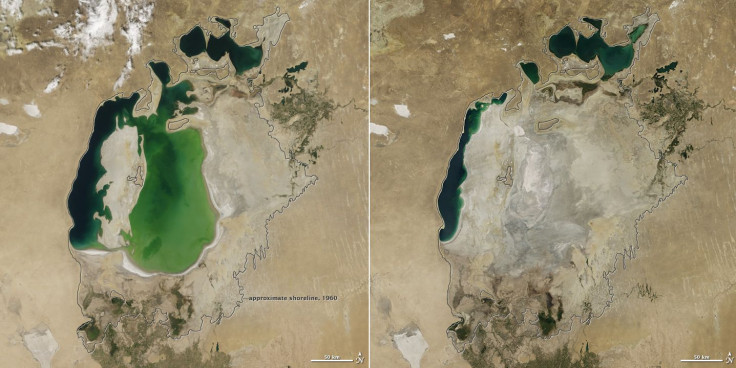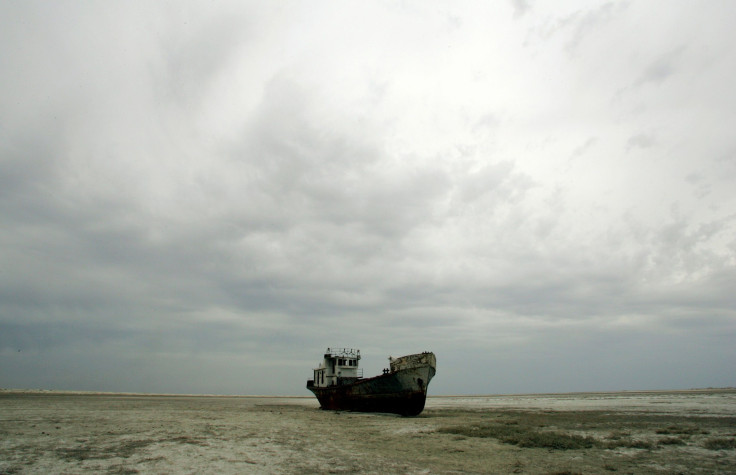Aral Sea: NASA Images Reveal How Once World’s Fourth-Largest Lake Is Nearing Extinction

Satellite images, released last week by NASA, reveal how a large section of the Aral Sea, a lake lying between Kazakhstan in the north and Karakalpakstan, an autonomous region of Uzbekistan, in the south, has dried out. The images from the Terra satellite show how the eastern basin of what was once the world’s fourth-largest lake is now completely parched.
According to NASA, the Terra satellite began capturing the images of the region in 2000, when the Aral Sea lake was already a fraction of its size in 1960. The images taken in 2000 had revealed that the Northern Aral Sea had separated from the Southern Aral Sea, and the former had split into eastern and western lobes, which remained tenuously connected at both ends.
“This is the first time the eastern basin has completely dried in modern times,” The Guardian quoted Philip Micklin, a geographer from Western Michigan University, as saying. “And it is likely the first time it has completely dried in 600 years, since Medieval desiccation associated with diversion of Amu Darya to the Caspian Sea.”

In the 1960s, the Soviet Union began a major water diversion project on the dry plains of present-day Kazakhstan, Uzbekistan and Turkmenistan, and the region’s two major rivers -- the Amu Darya and the Syr Darya -- were used to transform the desert into farms for cotton and other crops. Although irrigation made the desert bloom, it ruined the Aral Sea, according to NASA.
“By 2001, the southern connection had been severed, and the shallower eastern part retreated rapidly over the next several years,” NASA said, in a statement. “Dry conditions in 2014 caused the Southern Sea’s eastern lobe to completely dry up for the first time in modern times.”
The constant drying up of the Aral Sea has also led to the collapse of fisheries and local communities that depended on the lake. While the increasingly salty water became polluted with fertilizers and pesticides, blowing dust from the exposed lakebed, contaminated with agricultural chemicals, now pose a health hazard for local people, NASA said.
© Copyright IBTimes 2024. All rights reserved.












